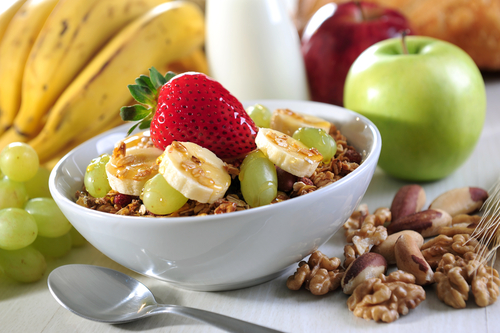
Photo: Shutterstock
The world over, we have become increasingly calorie conscious. But while we pay a lot of attention to dietary ‘no-nos’ such as carbs, fat and sugar, we sometimes forget to focus on the good stuff for our gut, specifically, dietary fibre.
This is especially important if you are following a high-protein diet, since fibre can easily get neglected when only filling up on meat, fish and dairy products.
Dietary fibre has so many benefits for children and adults that it is surprising that it so often takes a backseat in our dietary diligence. Here are just a few benefits.
- Upping your consumption is said to lower blood pressure and serum cholesterol levels.
- Eating more soluble fiber improves glycemia and insulin sensitivity in non-diabetic as well as diabetic individuals.
- And for those who are obese, fibre supplementation can help tremendously with weight loss. It keeps you full for longer and sends signals of early satiation to your brain, encouraging you to stop eating sooner.
- It also helps keep your gastrointestinal health in check, helping overcome several illnesses such as gastroesophageal reflux disease, duodenal ulcer, diverticulitis, constipation, and hemorrhoids.
According to the Indian Express, the recommended intake of dietary fibre is 40 g/ 2000 kcal to be consumed per day.
There are two types of fibre: soluble and insoluble. Each is important for your body for different functions. So-called soluble fibre dissolves in water and it helps lower cholesterol and regulate blood sugar and can also ease constipation. You can up your intake by eating more oat bran, vegetables and fruits such as banana and apples. Insoluble fibre cannot dissolve in water. It is often called roughage and it essential to maintain bowel health. It’s found in wheat bran, whole-wheat flour, nuts, vegetables, fruits and legumes (vegetables with seed pods) such as beans and peas or corn.
Tips to get more fibre in your diet:
- If you eat cereal for breakfast, choose a high-fibre variety, with more than six grams per serving. Adding banana, strawberries or raisins can also increase fibre content.
- Snack on a fruit, nuts or seeds instead of biscuits or chips.
- Replace white bread and pasta with whole-wheat ones and white rice with brown rice.
- Add more vegetables to curries, omelets, stews or soups. Or steam vegetables as a side dish to go with meals.
- Add a little oat bran or wheat bran powder (they are available in many provisions shops) to your food.
When choosing packaged food, keep in mind that foods with more than 4g of fibre per serving are considered to have high fibre content.
Remember to increase fibre intake gradually to allow your body time to adjust.
Share your thoughts, leave a comment below. Please like FamiLife’s page on Facebook so that you get all our articles and others may find us.
